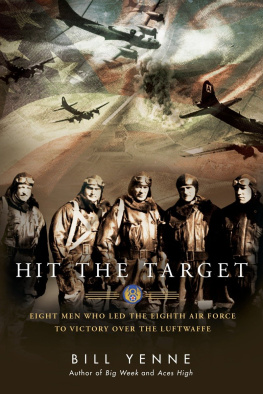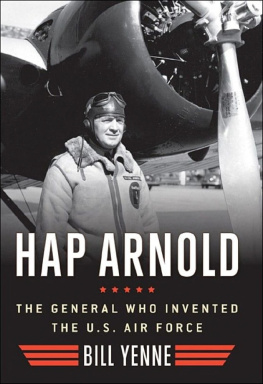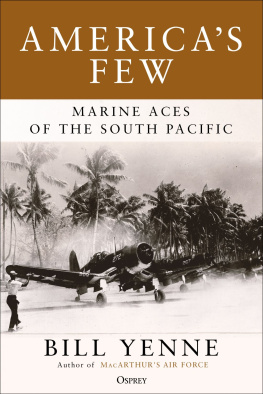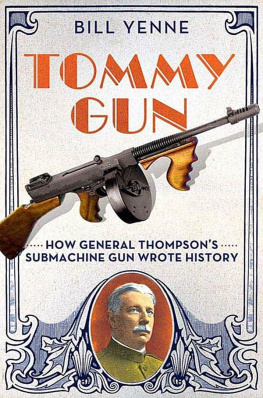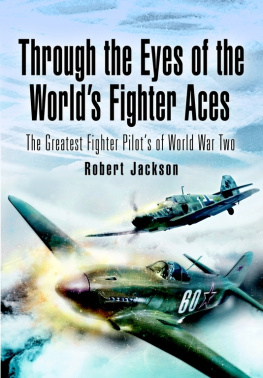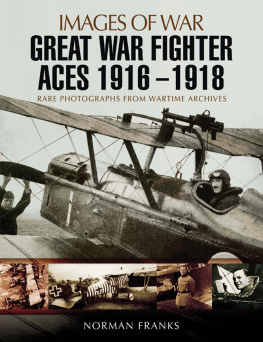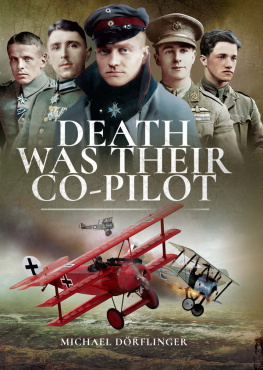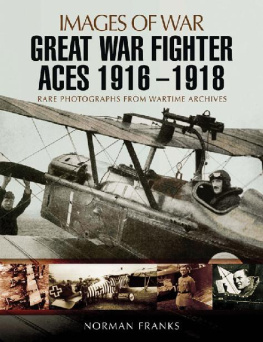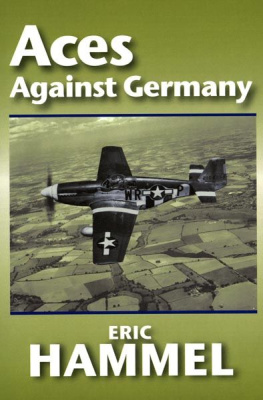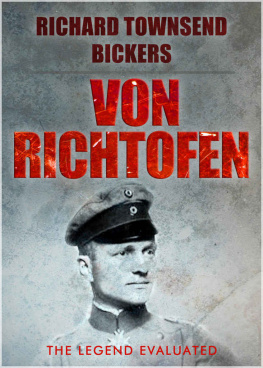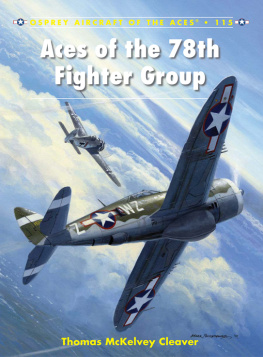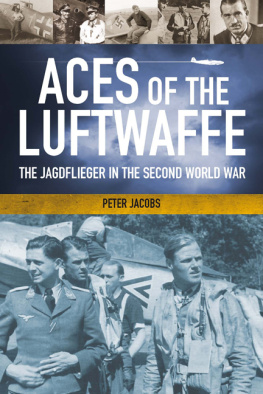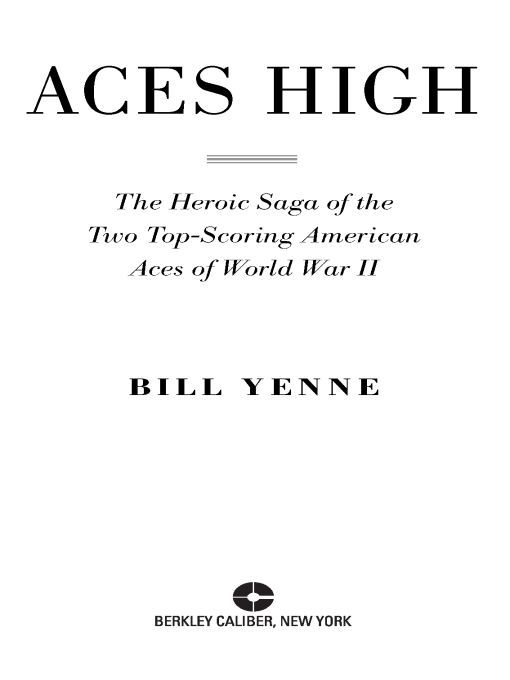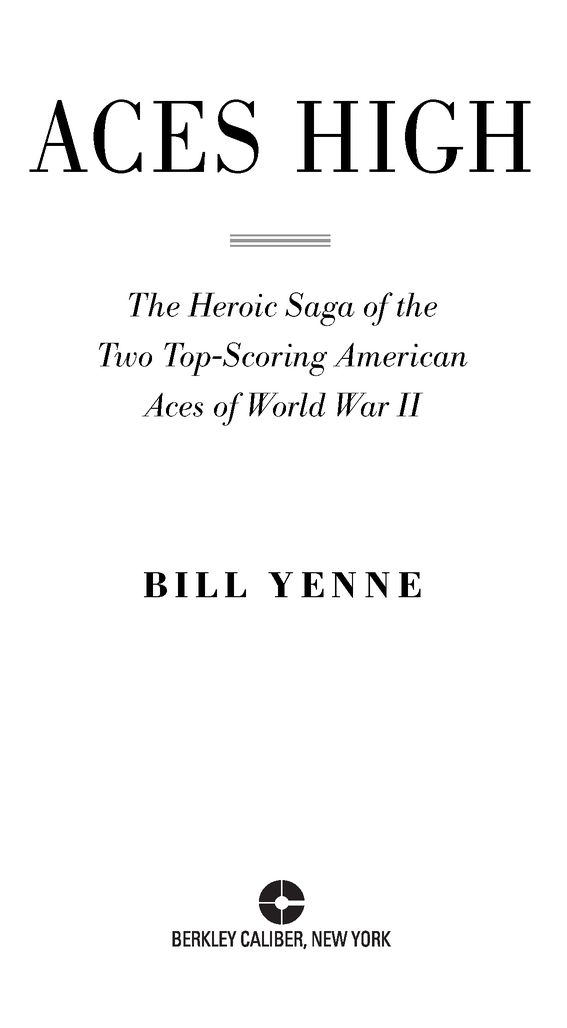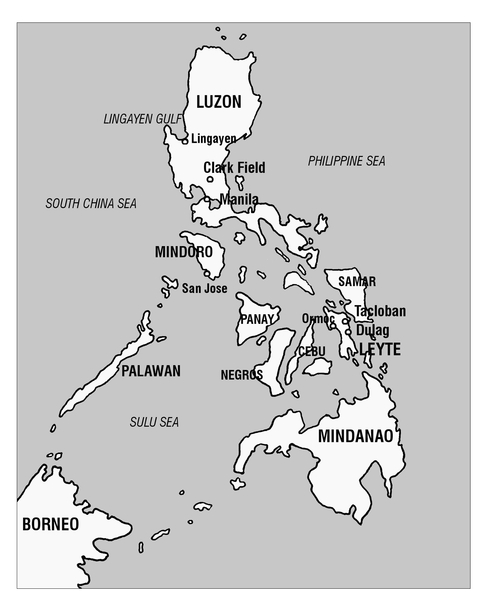Table of Contents
Most Berkley Caliber Books are available at special quantity discounts for bulk purchases for sales promotions, premiums, fund-raising, or educational use. Special books, or book excerpts, can also be created to fit specific needs.
For details, write: Special Markets, The Berkley Publishing Group, 375 Hudson Street, New York, New York 10014.
Also by the Author
Nonfiction
Aces: TRUE STORIES OF VICTORY & VALOR
In THE SKIES OF WORLD WAR II
secret WEAPONS OF THE COLD WAR
secret WEAPONS OF WORLD WAR II
Fiction
A DAMNED FINE WAR
RAPTOR FORCE
RAPTOR FORCE: HOLY FIRE
RAPTOR FORCE: CORKSCREW
INTO THE FIRE
To Cash.
May you grow up dreaming of heroes,
and once grown, may you be regarded as one yourself.
NOTES ON SQUADRON NOMENCLATURE AND ORGANIZATION
During World War II, the organizational structure of the U.S. Army Air Forces (USAAF) began at the top with numbered air forces, of which there were sixteen by the end of the war. Both Richard Bong and Thomas McGuire were assigned to the Fifth Air Force for their combat tours. In turn, each of the numbered air forces contained commands, usually a bomber command and a fighter command, among others. These were designated with Roman numerals.
Bong and McGuire were fighter pilots and therefore were in the V Fighter Command of the Fifth Air Force. Generally, the next level down was the group, which usually contained three squadrons.
For most of his combat career, McGuire was assigned to the 431st Fighter Squadron within the 475th Fighter Group, known as Satans Angels. From April to December 1944, McGuire was the commander of the 431st.
During his early combat career, Bong was assigned to the 9th Fighter Squadron within the 49th Fighter Group, known as the Forty-niners. After February 1944, he was assigned directly to the V Fighter Command and allowed to freelance, attaching himself to various units at his own discretion. These included squadrons within both the 49th and 475th fighter groups.
The USAAF itself was formed on June 20, 1941, as an autonomous component of the U.S. Army. It was the successor to the U.S. Army Air Corps, and it absorbed the functions, assets, and personnel of this organization. In 1947, the USAAF was replaced by the U.S. Air Force, an entity entirely independent of the U.S. Army.
The skies over New Guinea were their battlefield. Flying from bases here, Bong scored his first twenty-eight victories between December 1942 and April 1944, and McGuire scored his first twenty-four between August 1943 and October 1944. (U.S. Army)
The race between Bong and McGuire reached its crescendo over the Philippines. Bong scored his last twelve victories here between October and December 1944, and McGuire scored his last fourteen here during the same period. (Authors collection)
ACKNOWLEDGMENTS
Anyone who writes of Americas two highest-scoring aces must stand on the shoulders of Charles A. Martin, who spent many years compiling original documents related to the life of Tommy McGuire, and Carl Bong, whose privately published collection of his brothers letters are invaluable in both understanding Dick Bong and in tracing his career. In addition to these essential sources, the author wishes to thank Robert Fuhrman, executive director of the Richard I. Bong World War II Heritage Center; Gary W. Boyd, McGuire Air Force Base historian; and U.S. Air Force historian David Chenowith, who supplied photographs. Finally, a tip of the cap to my friend Dan Roam, who urged me and encouraged me to finish this book.
PROLOGUE
Knights of the Air
We sigh for our own lost youth as we think of him, with all the world before himthe medieval world, with all its possibilities of wild adventure and romantic fortunewith knights to overthrow at spear point and distressed damsels to succor and a princesss smile to win at some great tournament. And rank and fame to gain by prowess and hardihood, under the eye of kings, in some great stricken field.
WALTER CLIFFORD MELLER, A Knights Life in the Days of Chivalry (1924)
THE image of the lone warrior is one of the most enduring in human literature. He is the European knight-errant. He is the Japanese samurai. He is the lone rider of the American West. The solitary warrior is a powerful global cultural icon.
General William Tecumseh Sherman famously observed that war is hell, but war is also a paradox. On one hand, it is an all-consuming blood-bath; yet on the other, it is an endeavor that embodies gallantry and heroism that both inspires and excites. It turns the stomach and it stirs the heart. It induces nightmares and it inspires magnificent images that lift the soul.
It is that image of the lone warrior that arouses the imagination that paints warfare not as hell but as glorious. He is not lost among the anonymous dead, but preserved on the pages of great literature or carved in marble for the ages.
Since antiquity, volumes of epic poetry have celebrated Roman equites or medieval knights, whose victories were extraordinary and whose deaths were heroic. Written in the fifteenth century, Thomas Mallorys Morte dArthur is the classic and often imitated example, but there are vast libraries of others that tell the stories of real people whose heroism was backed by the shedding of real blood.
The warriors whose names are preserved in such epics were often members of an elite warrior class, the knights. In the Middle Ages, admission to knighthood was one of the highest honors that could be bestowed upon a young man, and to be such a warrior carried both immense prestige and immense danger.
The noblest youths, wrote Tacitus in first-century Rome, were not ashamed to be numbered among the faithful companies of celebrated leaders, to whom they devoted their arms and service. A noble emulation prevailed among the leaders to acquire the greatest number of bold companions.
The various European words for this special warrior give us a rounded picture of the identity of the man. The word knight derives from the Old English cniht, meaning a young man who is of service. The German word ritter means riderthere being that lone rider on horseback who recurs so often in heroic folklore. Indeed, the French word for knight is chevalier, meaning horseman, which is also the root word of chivalry, the code by which the knight lived his life of duty and honor, of courage and service. As in the famous tournaments, which were a sporting event allegory for real warfare, the knights met one another singularly, man on man, in a fight in which the better man always emerged victorious.
To achieve an honor such as knighthood was to achieve membership in a singular warrior class, but just as it carried great prestige, it also carried great responsibility. The institution of chivalry, to which the warrior subscribed, was a system of duty and honor by which the medieval European knight sought to distinguish himself from other warriors.


